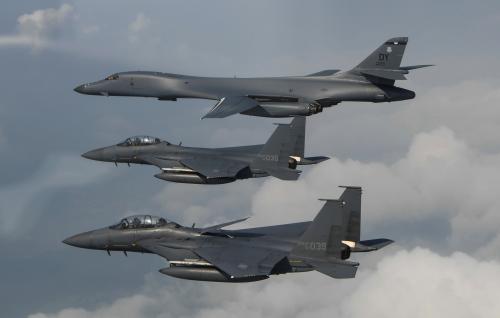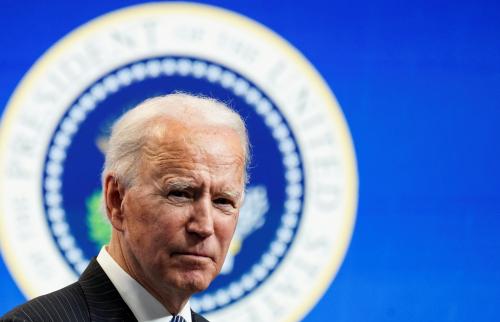Earlier this month, the Bush administration released the findings of its so-called nuclear weapons posture review. The plan has many good elements. For example, it proposes cutting the deployed force of long-range U.S. nuclear arms to about 2,000 warheads?one-third the current level. The Clinton administration aspired to make similar cuts but was impeded by congressional resistance and the long, slow process of formal arms control with Moscow. President Bush wisely is willing to make the cuts unilaterally and less formally, knowing that Russia would surely follow down the path of deep cuts, given its economic problems.
But there are elements of the weapons review that are less desirable. High on the list is the administration’s stance on the Comprehensive Test Ban Treaty, which was signed by the Clinton administration but never approved by Congress. The Bush administration has no interest in ratifying it. While it has no immediate intention to resume nuclear weapons tests, the administration believes such tests may someday be needed, either to ensure the reliability of the U.S. arsenal or to develop new types of warheads. As a result, it wants to upgrade the readiness of the Nevada nuclear test site.
Today, it would take two to three years to prepare a test that abided by environmental and health regulations. The administration appears intent on cutting that time roughly by half.
At first blush, such enhanced readiness may seem reasonable. What could be wrong, one might ask, with having a backup plan in case we discover serious problems in the existing nuclear arsenal and need to verify that a possible fix would work? The problem is that with each step toward renewed nuclear testing, the United States inches further away from supporting a treaty that it did much to create and that would serve its interests well.
Other nations stand to gain much more from future nuclear tests than we do. A country trying to develop nuclear weapons for the first time almost surely would need to test to develop a relatively lightweight warhead suitable for placement atop a ballistic missile.
Simpler warheads, akin to our “fat man” and “little boy” bombs dropped on Japan, might not require testing, but they would probably be so heavy that they would have to be delivered by truck or airplane. That would give us a chance to intercept them.
Keeping other countries from developing advanced warheads should be a goal for the United States. It is true that other countries still could test nuclear weapons even if the Comprehensive Test Ban Treaty had been ratified by the U.S. and other major powers. But Washington would have a much easier time punishing violators with economic sanctions?or even justifying the use of military force against their nuclear facilities in extreme cases.
The U.S. simply does not need testing to ensure the reliability of a strong nuclear deterrent. Many bomb designers would disagree with that statement, saying that as warheads age, they can deteriorate and fail in ways our computer models and other simulation techniques might not predict. Many of them argue that only actual nuclear testing can really ascertain the reliability of the arsenal.
But why do we have to let our warheads age? Following an idea promoted by Richard Garwin, one of the fathers of the hydrogen bomb, we could simply rebuild a fraction of our arsenal every year.
Doing this would necessitate using old-fashioned materials and techniques. It would be important to keep making the high explosives and the plutonium “pits” in nuclear warheads the same way they have always been made. We could not modernize the way we make nuclear warheads in the interest of modestly reducing environmental contamination or improving convenience.
So be it. Preserving the reliability of our nuclear deterrent without actual warhead testing is more important. In addition, the U.S. could also introduce a new, simpler type of bomb into its inventory that would be sure to work even if it deteriorated partially.
There is admittedly one difficult issue. What if, to attack an enemy’s deep underground bunkers or weapons production sites, the U.S. wanted a new type of nuclear bomb capable of penetrating many dozens of meters of rock before detonating? Such a new capability might well require testing.
But this argument is not compelling since the benefit of making it harder for countries like Iraq and North Korea to develop nuclear arms far outweighs any likely benefit of such a warhead, at least at present.
For now, the international moratorium on nuclear testing is generally holding, and we should keep it that way. Taking the first step toward eroding it by readying a test site for nuclear weapons tests is unnecessary to maintain the reliability of the U.S. nuclear arsenal today, and unwise. Keep the Nevada test site, but in a state of cold, long-term storage.


Commentary
Op-edKeep U.S. Nuclear Testing on the Back Burner
January 21, 2002